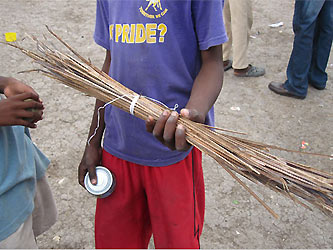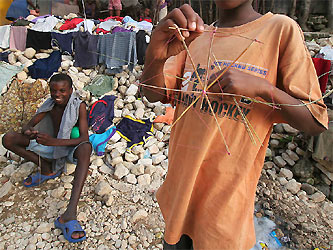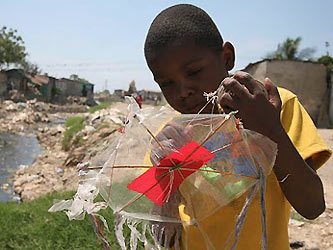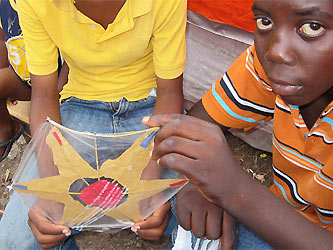 |
Making do with next to nothing is the way of life in Haiti, though many earthquake survivors now have less than that. But while Port-au-Prince has been knocked flat, it hums day and night. There is too much work to do, and too many things to make. Some are clearing rubble. Others are collecting aluminum or lumber, other making shelter with materials and bricks. |
The Haitian boy’s kite starts with thin sticks — woody reeds or straight twigs scraped smooth with a razor blade and cut to equal length, about eight inches. The kites are beautiful: some have layers of black and clear plastic forming diamonds and stars. Some have decorative edges, the plastic razor-sliced into piñata fringe. But they work, catching the breeze and jack-rabbiting into the smoky air. Small kites are notoriously hard to fly, but these are perfectly engineered. |
 |
A boy I met in a camp down the block from the ruins of the Catholic cathedral in Port-au-Prince pointed to the sky. Blinking into the sun, I took forever to find his kite: a darting black dot far above the shattered steeples. |
 |
 |
 |
Relief agencies gave out the tarps that now house tens of thousands of families, but they didn’t frame them. |
The Pétionville Club, once the capital’s only golf course, has clinics, toilets, tents and classrooms, gifts of outside charity. But it also has a homemade cinema, a market district, nail salons, barbershops and a disco. Credit text : Extract of Los Angeles Times by Lawrence Downes Credit photos : Logan - Brian Vander Brug - Lawrence Downes |
|